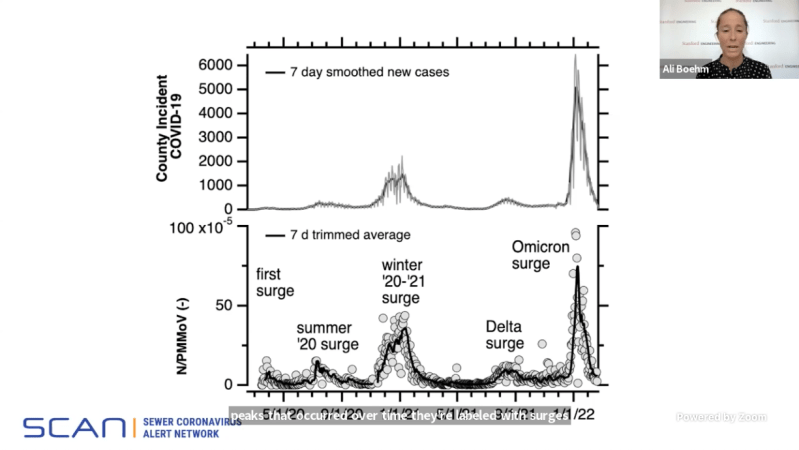Wastewater monitoring for pathogens should be incorporated into the nation’s public health infrastructure, especially during the COVID-19 pandemic, according to Stanford civil and environmental engineering professor Alexandria Boehm and Emory environmental health professor Marlene Wolfe ’11 PD ’21.
While research on wastewater monitoring for viruses, such as polio, has been done in the past, Boehm and Wolfe’s research is the first in which wastewater monitoring has been used for respiratory viruses like COVID-19, according to Wolfe. Based on early reports that shedding of COVID-19 in feces is observed in patients, Boehm and Wolfe said that they believed monitoring wastewater for the virus was “likely to be successful” during a Thursday talk sponsored by the Stanford School of Engineering.
Boehm and Wolfe’s research focuses on the solids in wastewater, which viruses like COVID-19 stick to, according to Wolfe. Boehm and Wolfe were able to detect COVID-19 in wastewater when there were “as few as just a couple cases per 100,000 people in the population,” allowing them to detect “needle in the haystack” cases, Wolfe said.
For their measurements, Boehm and Wolfe collected samples from wastewater treatment plants in the Bay Area. Once they had the samples, they tested them using polymerase chain reaction (PCR) assays, which amplify genetic material to help detect pathogens. As the COVID-19 pandemic progressed, they developed new PCR assays targeting specific mutations in COVID-19 variants in order to detect those variants in wastewater, according to Boehm.
“There isn’t a bunch of literature on assays for respiratory viruses in wastewater because people haven’t looked for them there before,” Boehm said. “We’ve had to develop and test new assays.”
COVID-19 data from wastewater monitoring can be a “valuable tool for informing pandemic response,” Boehm said. The trends in COVID-19 wastewater monitoring data over the past two years have correlated with the trends in COVID-19 case data from Santa Clara County at all of the locations that Boehm and Wolfe studied, they said. According to Boehm, people with COVID-19 shed the most virus into wastewater around the same time they feel sick and get tested.
“What we find is a one-to-one relationship between the case data and the wastewater data,” Boehm said.
Boehm and Wolfe said that they have considered questions involving the nature of fecal shedding and the impact of inconsistent sample collection methods and stormwater on wastewater monitoring. They have “gone and looked at every piece of this process” to the extent that they can, Wolfe said.
Even amidst changes in vaccination rates, COVID-19 variants and travel, Boehm and Wolfe have seen a “consistent relationship between new cases in the community and the wastewater data,” Wolfe said.
Wastewater monitoring can be especially useful during periods of limited testing infrastructure, such as during the beginning of the pandemic.
“At that time, we were ill-equipped to really get a sense of the prevalence or incidence of COVID-19 in the community,” Boehm said. “But the wastewater did tell us the incidence of the disease.”
In the event of another pandemic, wastewater monitoring can be used to quickly inform us if the virus is present in the population and how widespread it is, according to Boehm.
More people are turning to rapid tests for COVID-19, Boehm said, and unlike PCR tests, COVID-19 cases found through at-home rapid testing are often not reported to public health agencies. While this may make case data unreliable, wastewater data will still be “a good reflection of incident cases in the sewersheds where the wastewater comes from,” Boehm said.
Boehm and Wolfe are working to ensure wastewater monitoring is “enshrined as a public health monitoring system that we can use into the future,” Wolfe said. Figuring out how their data can be helpful to public health agencies has been an important part of their research. They are also working on expanding their work to other parts of the country and developing wastewater tests for other pathogens, such as influenza.
“Wastewater monitoring should be a part of our national infrastructure far into the future,” Wolfe said.
